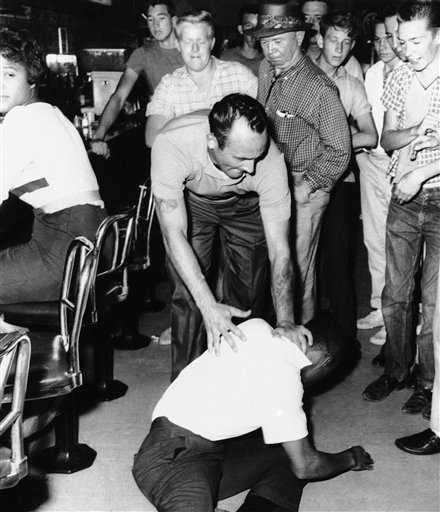The unanimous Supreme Court decision in Garner v. Louisiana, 368 U.S. 157 (1961) voided the application of a Louisiana breach of the peace statute that was used to stop peaceful sit-in demonstrations, such as those at department store lunch counters.
This was the first case before the Court to deal with the constitutionality of regulations on sit-ins, an important method of protest during the civil rights movement of the 1950s and 1960s.
Louisiana breach of the peace law found to be too vague
Chief Justice Earl Warren’s opinion for the Court found the convictions to be so lacking in evidence as to have violated due process. He noted that Louisiana courts had limited previous applications of the law to cases that either involved loud or aggressive behavior or were likely to provoke violence. Here he saw no evidence that the demonstrators had engaged in such provocative behavior.
Three judges wrote concurring opinions:
- Justice Felix Frankfurter failed to find such behavior criminal.
- Justice William O. Douglas based his concurring opinion on the public interest in securing places of public accommodation against racial segregation.
- Justice John Marshall Harlan II based his concurrence on First Amendment principles as illustrated in Cantwell v. Connecticut (1940), in which the Court had upheld the rights of Jehovah’s Witnesses to conduct door-to-door canvassing.
The facts clearly indicated that the petitioners were engaged in expressive conduct that was just as protected as the display of a red flag in Stromberg v. California (1931). Louisiana had not drawn or applied its breach of the peace law narrowly so as only to apply it when it presented a clear and present danger; thus, the law was too vague and uncertain in its application.
John Vile is a professor of political science and dean of the Honors College at Middle Tennessee State University. He is co-editor of the Encyclopedia of the First Amendment. This article was originally published in 2009.

